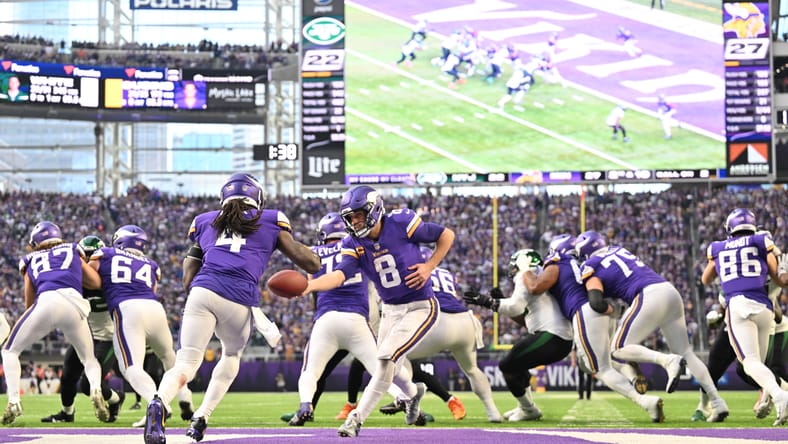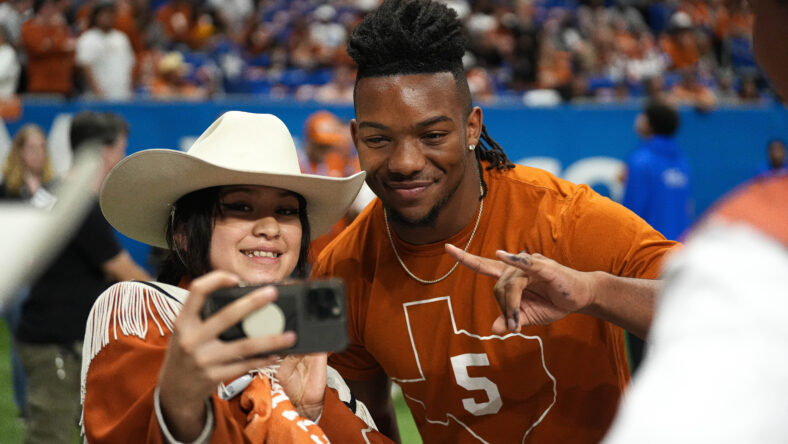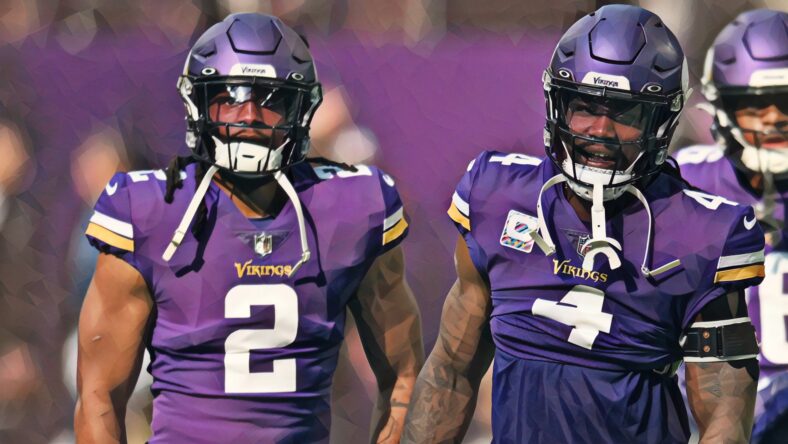Drafting an RB in Round 1 Is a Costly Mistake

Over the last five to seven years, the analytics community has determined that drafting an RB in round 1 or paying huge contracts is a costly mistake, and for good reason. Most running backs in the NFL are easily replaced. After all, there are very few Adrian Peterson or Christian McCaffrey in the league.
This is to say, a true stallion of a running back is difficult to find. More importantly, they are not required for an offense to have an efficient and effective run game.
Regardless of the push from the analytics community, Vikings fans have begun to talk themselves into the idea of drafting Bijan Robinson in the first round. Let’s be clear, drafting a running back in Round 1 is a costly mistake.
To better understand why this is a mistake, we must understand what “opportunity cost” is.
Opportunity cost is a common term in economics. The definition is “the loss of potential gain from other alternatives when one alternative is chosen.” That is to say, if the Vikings selected a running back in round 1, they could not select a different position like cornerback, wide receiver, or quarterback. Nor could they trade back and accumulate additional draft capital.
Many people have argued online that if the best player available (BPA) is Bijan Robinso,n then the Vikings should select. While I am of the opinion that BPA is the best way to approach the draft, you still need to consider positional value as well. That is where the real argument comes into play.
Is taking a running back in the first round worth the cost? Or can an offense produce enough run efficiency while expending far less capital?
Can the Vikings Achieve Offensive Efficiency without Selecting an RB in Round 1?

Some fans and analysts like to look at the production of running backs and say, “this is why you need a premium back.” However, when you dive deeper into the analytics this is not necessarily true.
I would argue that a running back that is good enough to play in the NFL can produce top-level production if the offensive line is capable of winning in the run game. To prove this point, let’s evaluate the top-5 run blocking teams, according to ESPN, and how they stack up against the Vikings.
- Baltimore Ravens, 77%
- Philadelphia Eagles, 75%
- Kansas City Chiefs, 74%
- Denver Broncos, 74%
- Chicago Bears, 74%
- Minnesota Vikings 71% (18th)
The offensive lines for these teams had a high degree of success in winning their run blocks. How did this correlate with their rushing success rate? Who was their non-QB leading rusher? What were the average yards per carry of that rusher? How much of the salary cap did they use?
- Baltimore Ravens, 47.6% (2nd), J.K. Dobbins with 5.7 YPC, 0.8% of cap
- Philadelphia Eagles, 50.7% (1st), Miles Sanders with 4.9 YPC, 0.8% of cap
- Kansas City Chiefs, 44.5% (6th), Isiah Pacheco with 4.9 YPC, 0.3% of cap
- Denver Broncos, 38.1% (25th), Latavius Murray with 4.4 YPC, 0.3% of cap
- Chicago Bears, 40.9% (17th), David Montgomery with 4.0 YPC, 1.5% of cap
- Minnesota Vikings, 38.1% (26th), Dalvin Cook with 4.4 YPC, 5.7% of cap
As you can see, the rushing success of each of the top-5 run block win rate teams is higher than the Vikings. In fact, the top three run block teams have more YPC than Dalvin Cook. The worst part of the Vikings is that they are doing so while paying significantly less at the position.

The point is that spending a ton of money or high draft picks does not automatically correlate with better run-game efficiency. It seems arguable that spending less money on a running back and using that to improve your offensive line would be more impactful.
Therefore, if the Vikings decide to move on from Dalvin Cook this year, do not fret. Better yet, do not even hope that they decide to draft Robinson, even if he is BPA when they are on the clock. There is no explicit value in selecting a running back in round 1.
Based on what we have evaluated in this article, the resources needed to get Robinson would be way more than necessary to have an efficient and effective run game. It would be wise to spend those resources on more important roster holes.
Mitch Massman is a lifelong Vikings fan. His first heartbreak was the 1998 NFC championship game. His full-time job is as an economic development professional in rural Minnesota. He fantasizes about the Vikings winning a Super Bowl one day, but until then he will write about the Vikings. Follow him on Twitter @skol_vikings3

You must be logged in to post a comment.